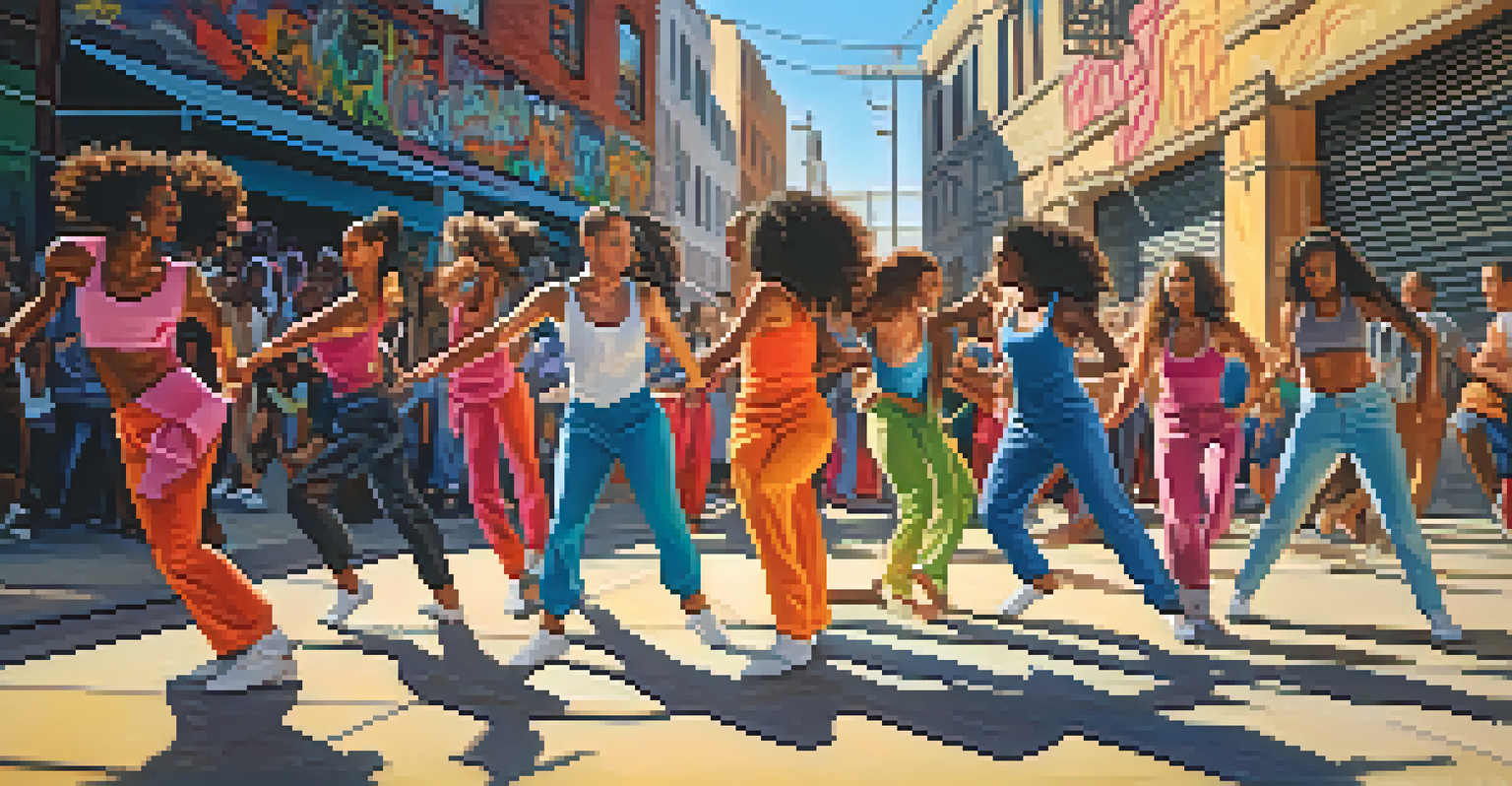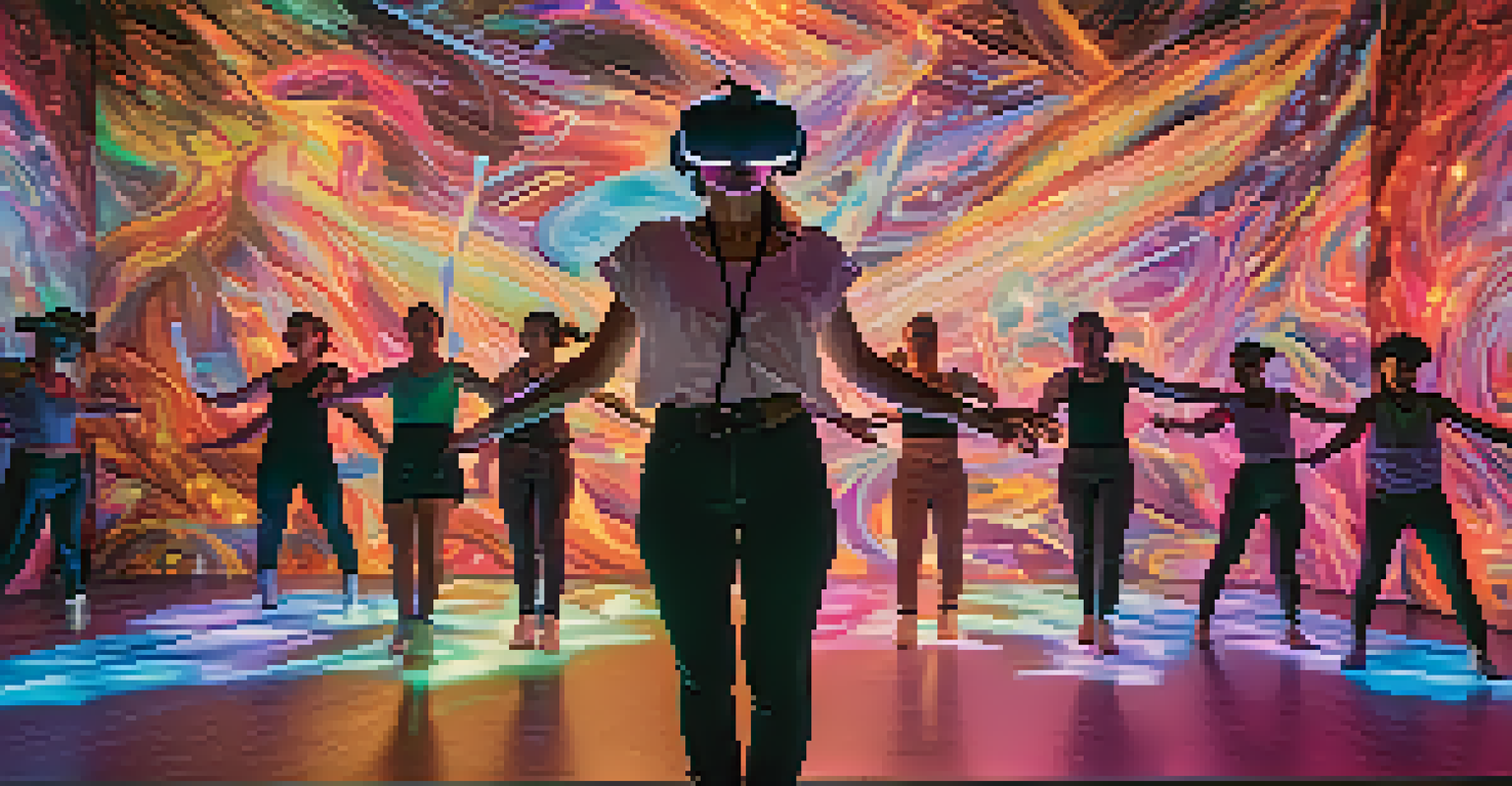The Evolution of Dance: Integrating Technology in Performance

A Brief History of Dance: From Tradition to Innovation
Dance has always been a reflection of culture and society, evolving over centuries. Historically, it began as a form of expression linked to rituals, celebrations, and storytelling. As time progressed, dance styles diversified, influenced by social changes, music evolution, and technological advancements.
Dance is the hidden language of the soul.
In the early 20th century, the emergence of jazz and ballet brought fresh perspectives to dance, allowing for greater creativity and expression. The integration of technology into performance art is not entirely new; however, recent innovations have made it an integral part of contemporary dance.
Today, dancers are not just performers but also storytellers who utilize technology to enhance their narratives. This evolution has opened up new avenues for artistic exploration, making dance more accessible and engaging for diverse audiences.
The Role of Technology in Modern Dance
Technology plays a pivotal role in modern dance, transforming how performances are created and experienced. From lighting design to digital projections, tech tools help choreographers craft immersive atmospheres that captivate audiences. For example, LED screens can create dynamic backdrops that change with the rhythm of the dance.

Moreover, wearable technology and motion sensors allow dancers to interact with their environment in innovative ways. These devices can capture movement data and translate it into visual art, enhancing the storytelling aspect of dance. This synergy between technology and choreography leads to unique performances that engage viewers on multiple levels.
Technology Transforms Dance
The integration of technology in dance enhances creativity and audience engagement through innovative tools like AR and VR.
As a result, dance has evolved into a multi-sensory experience where audiences can feel as much as they see. This shift encourages collaboration between dancers, choreographers, and technologists, fostering a new creative community that pushes artistic boundaries.
Digital Platforms: Expanding Dance's Reach
The rise of digital platforms has significantly expanded the reach of dance performances. In the past, audiences were limited to live shows in theaters, but now, performances can be streamed globally, allowing for a broader audience engagement. This accessibility is particularly beneficial for emerging artists looking to showcase their talents.
Technology is best when it brings people together.
Social media platforms also play a crucial role in promoting dance. Dancers can share snippets of their work, engage with fans, and even collaborate with other artists remotely. This instant connectivity has led to the birth of viral dance trends, making dance a part of popular culture.
As a result, traditional barriers of entry in the dance world are being dismantled, making it easier for diverse voices to be heard. This digital evolution not only democratizes dance but also fosters a sense of community among dancers and fans alike.
Augmented Reality: A New Dimension in Dance
Augmented Reality (AR) is rapidly becoming a game-changer in the dance industry. By overlaying digital elements onto the physical world, AR creates interactive environments that can enhance performances. Imagine a dancer performing in a studio while digital visuals surround them, creating an experience that blurs the line between reality and imagination.
This technology allows choreographers to experiment with visuals that respond to movement in real-time, adding an extra layer of engagement. Dancers can be seen interacting with digital characters or elements, creating a captivating dialogue between the physical and virtual realms.
Social Media Boosts Dance Trends
Platforms like TikTok and Instagram have revolutionized the emergence and spread of dance trends, fostering a global community.
As AR continues to develop, its potential for storytelling in dance is limitless. This innovation not only enriches performances but also encourages audiences to view dance through a different lens, inviting them to experience art in exciting new ways.
Virtual Reality: Immersive Dance Experiences
Virtual Reality (VR) takes the integration of technology in dance a step further by creating fully immersive experiences. With VR headsets, audiences can step into a digital world where they can watch performances from multiple perspectives or even interact with the dancers. This technology transforms passive viewers into active participants in the art.
For instance, a VR dance performance can allow viewers to choose their vantage point, whether it’s front row or backstage. This personalized experience enhances engagement and emotional connection, making dance more impactful.
As VR technology becomes more accessible, we may see a shift in how dance is presented and consumed. This evolution could redefine the relationship between performers and audiences, offering new ways to share emotions and stories through movement.
The Impact of Social Media on Dance Trends
Social media platforms have revolutionized how dance trends emerge and spread. Dancers can now showcase their skills and creativity to a global audience, leading to the rapid rise of viral challenges and styles. Platforms like TikTok and Instagram have become breeding grounds for new dance fads, bringing fresh energy to the art form.
These platforms also allow for immediate feedback and interaction, creating a sense of community among dancers and fans. A simple hashtag can connect thousands of dancers worldwide, fostering collaboration and inspiration. This interconnectedness can lead to innovative styles that blend different influences and cultures.
Future of Dance is Collaborative
As technology advances, collaborations between choreographers and tech developers will create dynamic performances that challenge artistic boundaries.
As a result, social media not only promotes dance but also encourages diversity and inclusivity within the community. New voices are emerging, and traditional dance forms are being reimagined, leading to an exciting evolution of the art.
The Future of Dance: Merging Art and Technology
As technology continues to advance, the future of dance looks promising. Innovations like AI-driven choreography and advanced motion capture are already being explored, offering new tools for artists to express themselves. This merging of art and technology will likely lead to even more dynamic performances that challenge conventional boundaries.
Moreover, as the dance community embraces these technologies, there will be a greater emphasis on collaboration across disciplines. Choreographers may work closely with tech developers to create unique experiences that blend movement, visuals, and sound in unprecedented ways.

Ultimately, the evolution of dance through technology is an exciting journey filled with endless possibilities. As artists continue to push the envelope, audiences can look forward to witnessing performances that are not just visual spectacles but also profound emotional experiences.